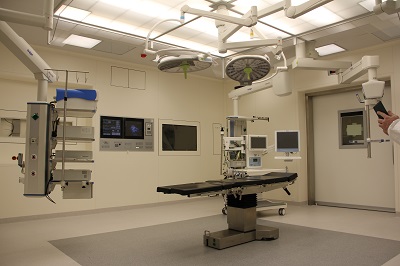To apply for D-class medical device registration in Indonesia through the Ministry of Health (MOH) and the National Agency of Drug and Food Control (BPOM), you need to follow a structured process. Below are the steps on how to apply, as well as the platform where you need to submit your application.
1. Where to Apply: BPOM e-Registration System
- All medical device registration in Indonesia, including D-class devices, is managed through the BPOM e-Registration system. This is the official online portal where you will submit your registration application, upload documents, and track the status of your application.
- Website: You must access the BPOM e-Registration portal through the official website of BPOM: https://www.pom.go.id.
Key Steps:
- BPOM e-Registration Portal: Visit the official BPOM website and find the link to the e-Registration system.
- Create an Account: To apply for registration, you must create an account on the BPOM e-Registration portal. This account is typically created by the local authorized representative or distributor in Indonesia, as they are responsible for the registration process.
- Log in and Submit Application: Once your account is created, you will log in, complete the required forms, upload the necessary documents, and submit your application for review.
2. How to Apply: Step-by-Step Process
A. Appoint a Local Authorized Representative (if you are a foreign manufacturer)
- If you are a foreign manufacturer, you must appoint a local authorized representative or distributor in Indonesia to submit the application on your behalf.
- The local authorized representative will be the legal entity in Indonesia responsible for the registration process, product distribution, and communication with BPOM.
B. Prepare the Required Documents
- Document Checklist:
- Certificate of Free Sale (CFS): Issued by the regulatory authority in the country of origin (e.g., FDA, CE mark).
- Product Information: Detailed description, intended use, and technical specifications.
- Risk Classification Evidence: Documentation to classify the device as D-class (low-risk).
- Labeling and Instructions for Use (IFU): Must be in Indonesian or with certified translations.
- Quality Management System (QMS) Documentation (if applicable): E.g., ISO 13485 certification.
- Local Distributor Agreement: Signed agreement between the foreign manufacturer and the local distributor or representative in Indonesia.
- Other documents (if applicable): Any additional supporting documents like test reports, clinical data, etc.
- Important Notes:
- Ensure all documents are accurate, complete, and translated into Indonesian (except for certificates from foreign authorities like CFS or ISO).
- Verify that the Instructions for Use and product labeling meet Indonesian language requirements.
C. Complete the e-Registration Form
- Login to the BPOM e-Registration system and fill out the medical device registration form. This will include details about the device, manufacturer, local representative, and risk classification.
- Upload Documents: Attach all the required documentation (e.g., CFS, product description, risk classification, labeling, IFU, etc.) in the appropriate sections of the e-Registration form.
- Ensure Document Formats: Ensure that your documents are in the correct file format (usually PDF or JPEG) and that file sizes are within the acceptable limits set by BPOM.
D. Pay the Registration Fee
- Payment of Fees: After submitting the application, you will be required to pay the registration fee. The fee for D-class devices typically ranges from IDR 5,000,000 to IDR 10,000,000 (approximately USD 300 to USD 650).
- Online Payment: BPOM provides an online payment system for this fee. Once payment is made, a receipt will be issued, and your application will proceed to the review stage.
E. BPOM Review Process
- After submission, BPOM will review the application and supporting documents to verify that they comply with Indonesian regulations. For D-class devices, this review process is generally quicker compared to higher-risk devices.
- Request for Clarifications: If BPOM needs more information or clarification, they will request it via the e-Registration portal. Make sure to respond promptly to avoid delays.
- Estimated Processing Time: The review process for D-class devices usually takes 2 to 6 months, depending on the complexity and completeness of the application.
F. Issuance of Registration Certificate
- Once BPOM has completed the review and the application is approved, they will issue a Certificate of Registration for the medical device.
- Market Authorization: With the certificate, your device can be legally marketed and sold in Indonesia.
- The Certificate of Registration is typically valid for 5 years, after which it needs to be renewed.
3. Key Points to Remember
- Local Representation: Foreign manufacturers must appoint a local authorized representative or distributor in Indonesia, as they are required to manage the registration process.
- Compliance with Indonesian Regulations: Ensure all documents, especially labeling and IFU, comply with Indonesian language and format requirements.
- Document Preparation: Properly prepare and translate all documentation, including certificates, product descriptions, and technical data, to avoid delays.
- Fees and Payment: Be prepared to pay the registration fee through BPOM’s online system during the application submission process.
4. Resources for D-Class Medical Device Registration
- BPOM Website: For guidelines and e-Registration access, visit https://www.pom.go.id.
- e-Registration Portal: After registering an account, you can apply for medical device registration through BPOM’s official e-Registration portal.
By following these steps and utilizing the BPOM e-Registration system, you can apply for the registration of a D-class medical device in Indonesia. The process requires careful documentation and adherence to Indonesian regulations, so working with a local authorized representative is crucial for foreign manufacturers.

Contact Us:
Whatsapp or Wechat:+86 15816864648;email address:hito.lin@grzan.cn
.png)
.jpg)

.png)

.png)